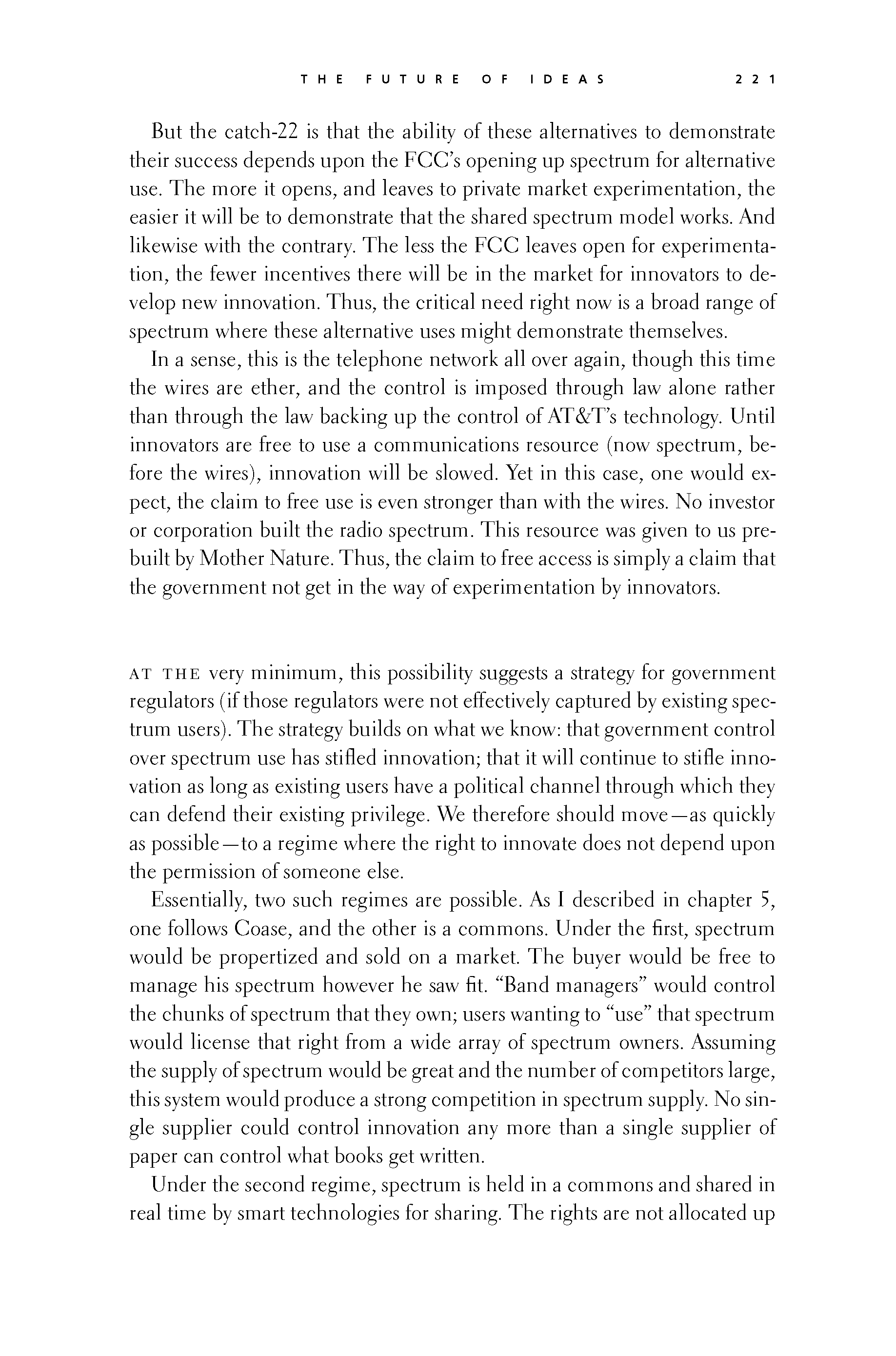 p220 _
-chap- _
toc-1 _
p221w _
toc-2 _
+chap+ _
p222
p220 _
-chap- _
toc-1 _
p221w _
toc-2 _
+chap+ _
p222
But the catch-22 is that the ability of these alternatives to demonstrate
their success depends upon the FCC's opening up spectrum for alternative
use. The more it opens, and leaves to private market experimentation, the
easier it will be to demonstrate that the shared spectrum model works. And
likewise with the contrary. The less the FCC leaves open for experimenta-
tion, the fewer incentives there will be in the market for innovators to de-
velop new innovation. Thus, the critical need right now is a broad range of
spectrum where these alternative uses might demonstrate themselves.
In a sense, this is the telephone network all over again, though this time
the wires are ether, and the control is imposed through law alone rather
than through the law backing up the control of AT&T's technology. Until
innovators are free to use a communications resource (now spectrum, be-
fore the wires), innovation will be slowed. Yet in this case, one would ex-
pect, the claim to free use is even stronger than with the wires. No investor
or corporation built the radio spectrum. This resource was given to us pre-
built by Mother Nature. Thus, the claim to free access is simply a claim that
the government not get in the way of experimentation by innovators.
///\\\
At the very minimum, this possibility suggests a strategy for government
regulators (if those regulators were not effectively captured by existing spec-
trum users). The strategy builds on what we know: that government control
over spectrum use has stifled innovation; that it will continue to stifle inno-
vation as long as existing users have a political channel through which they
can defend their existing privilege. We therefore should move -- as quickly
as possible -- to a regime where the right to innovate does not depend upon
the permission of someone else.
Essentially, two such regimes are possible. As I described in Chapter 5,
one follows Coase, and the other is a commons. Under the first, spectrum
would be propertized and sold on a market. The buyer would be free to
manage his spectrum however he saw fit. "Band managers" would control
the chunks of spectrum that they own; users wanting to "use" that spectrum
would license that right from a wide array of spectrum owners. Assuming
the supply of spectrum would be great and the number of competitors large,
this system would produce a strong competition in spectrum supply. No sin-
gle supplier could control innovation any more than a single supplier of
paper can control what books get written.
Under the second regime, spectrum is held in a commons and shared in
real time by smart technologies for sharing. The rights are not allocated up-
[[221]]
p220 _
-chap- _
toc-1 _
p221w _
toc-2 _
+chap+ _
p222